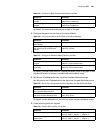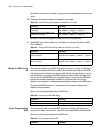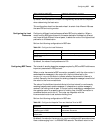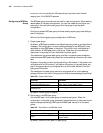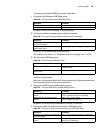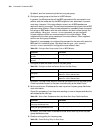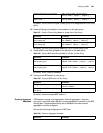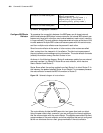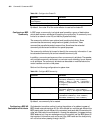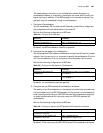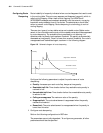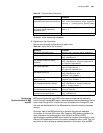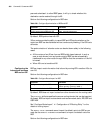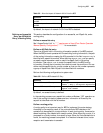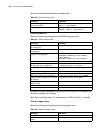
Configuring BGP 461
The non-clients must form an all-closed network with the reflector, as they follow
the basic rules of IBGP. A client should not be peer of other internal speakers
outside its cluster. The reflecting function is achieved only on the route reflector.
All the clients and non-clients are normal BGP peers irrelevant to the function. A
client is a client only because the route reflector regards it as the client.
When the router reflector receives several routes to one destination, it chooses the
best one based on the usual BGP routing strategy process. The best route transfers
inside AS according to following rules:
■ If the route is received from non-client peers, it only reflects to clients.
■ If the route is received from client peers, it reflects to all the clients and
non-clients except this route's sender.
■ If an EBGP peer receives the route, it is reflected to all clients and non-client
peers that can be reflected.
1 Configure the route reflection between clients.
Perform the following configurations in BGP view.
Table 541 Configure the Route Reflection Between Clients
By default, the route reflection function is disabled between the clients within the
reflection group.
Note that the route reflector configuration between the clients is invalid if the
clients are fully connected.
2 Configure the cluster ID.
As the route reflector is imported, the route selection circle can occur in an AS,
and the route that leaves a cluster during update may try to reenter this cluster.
The traditional AS routing method cannot detect the internal circle of the AS,
because the update has not left the AS yet. BGP provides two methods to avoid an
AS internal loop when you configure the route reflector:
a Configure an originator-ID for the route reflector:
The originator-ID is a 4-bit, optional, non-transitional BGP attribute created by
the route reflector. It carries the router ID of the originator. If the configuration
is improper, and the routing update returns to the originator, the originator will
discard it.
You don't need to configure this parameter, and it functions automatically
when the BGP protocol is started.
b Configure the cluster-ID of the route reflector:
Generally, a cluster has only one route reflector. To avoid routing update
information failure due to the route reflector failure, multiple route reflectors
are recommended for a cluster. If more than one route reflector exists in a
cluster, all the route reflectors must be configured with the same cluster ID.
Perform the following configurations in BGP view.
Operation Command
Enable route reflection function between
the clients within the reflection group
reflect between-clients
Disable route reflection function between
the clients within the reflection group
undo reflect between-clients



